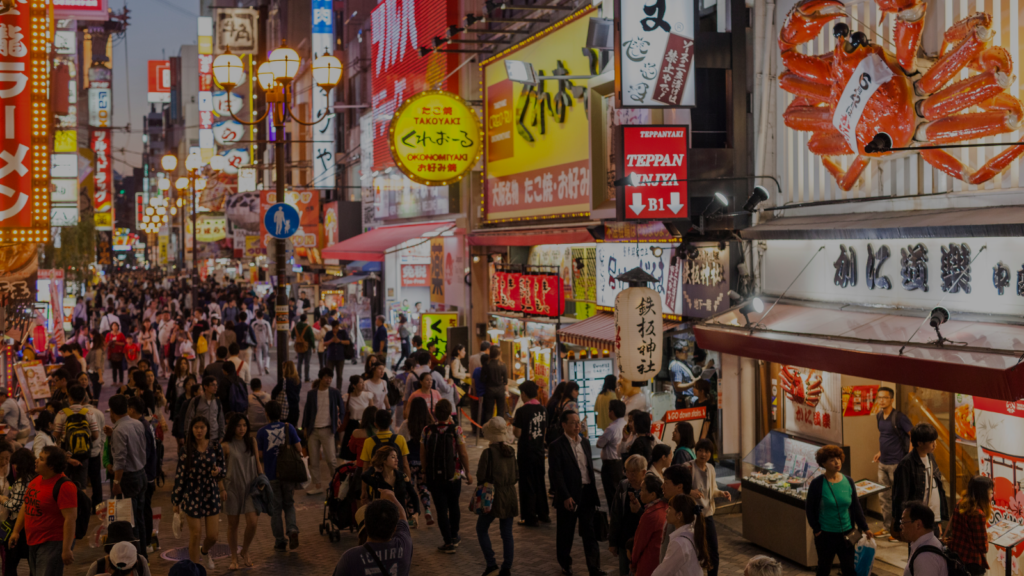Booming foreign tourist arrivals have provided a significant boost to Japan’s economy — and this is being driven by more than just the weak yen. It reflects Japan’s strong competitiveness in attracting global visitors and its ability to diversify its exposure, although there is also the drawback of too much tourism.
Japan’s economy is finally gaining positive momentum. The weak yen, the national currency, and the demand for “revenge travel” after COVID-19 pandemic restrictions were lifted globally have fueled a strong recovery in inbound tourism. This is driven not only by cyclical factors but also by long-term investments from the government aimed at attracting more foreign tourists. Japan has introduced more favorable visa policies, improved connectivity, and increased government spending, such as its hosting of the World Expo in 2025 and the construction of its first gambling resort in Osaka, which should be completed by 2030.
Many countries view Japan as a trustworthy trade and investment partner, and its cultural influence has helped Japanese firms expand overseas, mitigating the impact of an aging society and low interest rate environment. Of all sectors of the economy, tourism has benefited the most from Japan’s international image, creating a virtuous circle that brings economic benefits.
How does Japan’s tourism sector fare?
After returning as prime minister in 2012, Shinzo Abe proposed a sweeping package of economic reforms that became known as “Abenomics” to boost economic growth. He introduced “three arrows”: expansionary monetary policy; flexible fiscal spending; and growth strategies, including structural reforms and finding new drivers. He viewed tourism as a pillar of the growth strategy, not least because it would also help the retail, transportation, and hotels and catering service sectors increase employment and stimulate growth.
To attract more visitors, in 2013, Japan successfully bid for the 2020 Summer Olympics. The government also set a target of attracting 20 million annual visitors by 2020 and more than 30 million by 2030. It eased visa requirements, especially for Chinese tourists, and provided incentives for new flight routes and local cost carriers. Although the bet on the Olympic Games didn’t pay off because of the COVID-19 pandemic, tourist receipts have been growing and even overtook semiconductors and iron and steel as Japan’s second-largest exported goods or services in 2019, behind only automobiles (see Chart 1).
Chart 1: Japan: top exports in goods and services
In the post-pandemic era, tourism has continued positive momentum. As of May 2024, Japan is welcoming in excess of 3 million foreign tourists monthly, around 8% above the pre-pandemic level (see Chart 2). Japan attracted 31 million tourists between July 2023 and June 2024, exceeding the government’s initial targets. Across the Asia Pacific, Japan is the best-performing market in terms of visitor arrivals now compared to 2019, with most other economies still struggling to normalize (see Chart 3).
Chart 2: Japan: total number of foreign tourists
Charts 3: Asia Pacific: latest number of tourists (May 2024) versus pre-pandemic levels (Dec 2019)
South Korea is the biggest contributor by number of visitors
The growth in foreign tourist numbers is mainly driven by South Koreans, Chinese, and Taiwanese, who accounted for 24%, 18%, and 15%, respectively, of all tourist arrivals in Japan in May 2024 (see Chart 4). South Korea has always been an important market, but geopolitics often affects visitor flows. In July 2019, South Korea and Japan entered a trade war, with Tokyo imposing export controls on South Korea for three chemical compounds critical for semiconductor production, namely hydrogen fluoride, photoresist, and fluorinated polyimide. The South Korean government was seen as retaliating when a local court demanded that Nippon Steel compensate the families who were forced into labor during World War Two when South Korea was occupied by Japan. The tensions led to South Koreans boycotting Japanese products and canceling trips to Japan.
Chart 4: Japan: source of foreign tourists by top 5 markets
However, tourism inflows have rebounded since Japan-South Korea bilateral ties warmed up (see Chart 5). In March 2023, South Korean President Yoon Seok-yue visited Tokyo to meet Japanese Prime Minister Fumio Kishida. The two sides lifted trade restrictions, restarted shuttle diplomacy on regular mutual visits, and repaired some historical disputes. Kishida then visited South Korea in May of that year. These two visits were the first by a Japanese and South Korean leader in 12 years.
Chart 5: Japan: Visitors from South Korea and news sentiment
China is the biggest spender, but there is some progress in diversification
While the return of Chinese tourists to Japan has been slower than South Koreans, they are significant in terms of the recovery of tourist spending. Although China has a lower share in overall tourist numbers, it is the biggest source of expenditure, contributing 21% of the total in Q2 2024 (see Chart 6). A stricter visa policy and diplomatic rifts related to the discharge of radioactive water from the Fukushima Daiichi Nuclear Power Plant may have contributed to the downbeat recovery.
Chart 6: Japan: quarterly foreign tourist spending by top 5 markets
While a large population is generally positively correlated to the potential number of visitors, it also depends on the attractiveness of the tourist destination. To measure Japan’s appeal, we can look at the ratio of visitors to the total population. Despite their relatively small population size, especially compared to mainland China, Hong Kong and Taiwan have the highest ratio of foreign visitors per 1,000 residents, at 29 and 20, as of June 2024, exceeding the 2019 level. The number of visitors from Hong Kong and Taiwan increased by 15% and 19%, respectively, in the first five months of 2024 compared with the same period in 2019. They made up around a quarter of total visitor arrivals this year (see Chart 7). Due to the strong cultural influences, ranging from food to dramas, they have long been Japan’s major source of foreign tourists.
Chart 7: Japan: monthly foreign visitors per 1000 persons
The above-mentioned trends also show Japan’s ability to find alternative tourism markets and diversify away from China. As of Q2 2024, the number of non-Chinese tourists was 6% higher than the total number of tourists visiting Japan in Q4 2019 (see Chart 8). Moreover, expenditure by non-Chinese tourists is 40% higher than average pre-pandemic levels (see Chart 9).
Chart 8: Japan: quarterly number of foreign visitors by source
Chart 9: Japan: quarterly foreign tourists expenditure by source
In contrast, between 2016 and 2019, China comprised around 40% of total tourist spending and 30% of total visitors in Japan (see Chart 10). If the share normalizes gradually, the Chinese will continue to be the biggest spenders in Japan. However, there are uncertainties about whether Chinese tourists will spend the same way post-pandemic. Because China is suffering from decelerating economic growth and persisting deflationary pressure, Chinese tourists have become more cautious in terms of consumption and increasingly have chosen to vacation domestically. For Japan, it is an act of benefiting from and managing China’s exposure at a reasonably comfortable level, especially as tourist flows can always be disrupted by geopolitics.
Chart 10: Japan: exposure to China in foreign tourism
Weak yen and high competitiveness
While Japan has long been an attractive tourist destination, the weak yen is the biggest cyclical driver of post-pandemic tourism recovery. Since December 2019, it has depreciated 44% against the US dollar and 26% in the nominal effective exchange rate (NEER) term, measuring against a basket of currencies weighted by trade partners (see Chart 11). The favorable exchange rate has made trips to Japan more affordable, fuelling the post-COVID tourism boom.
Chart 11: Japan: foreign exchange rates
However, Japan’s recovery is more than just because of a weak yen. Japan came third in the World Economic Forum’s travel and tourism development index, after the United States and Spain (see Chart 12). It scores highly in abundant cultural, non-leisure, and natural resources, as well as ground infrastructure.
Chart 12: Travel & tourism development index: top 10 countries
Therefore, Japan can provide a diversified tourism experience, catering to different preferences. In 2023, Japanese food was ranked as the main reason for visiting Japan, above sightseeing, hot springs, and shopping. (see Chart 13). A more granular breakdown by country shows shopping is the main reason why Asian tourists visit Japan, whereas cultural activities are the most attractive to visitors from the West.
Japan has experienced a big divergence in tourism growth between urban and rural areas, yet the diversified offering of tourism provides an opportunity to narrow the gap. While cities have witnessed the biggest growth in the number of foreign tourists, rural areas are gaining traction. The Japanese government is aware of the opportunities and plans to encourage foreign tourists to stay in remote areas, providing more investment of high-end resort hotels in 35 national parks by 2031.
Chart 13: Japan: Reasons to visit Japan next time
Double-edged swords: over-tourism, prices and currency
Although the economic benefits are apparent, the flourishing tourism sector faces challenges. First, the spillover effect of over-tourism can be problematic for local residents. Hotel accommodation data shows the share of foreign guests reached a record high of 25% in May 2024 (see Chart 14).
Chart 14: Japan: local and foreign hotel guests
Still, over-tourism is not only the result of foreign tourists. The Japanese have themselves been taking more domestic trips and fewer overseas trips because the weaker yen has reduced their purchasing power. From a regional perspective, Tokyo saw the most significant increase in local and foreign tourists, with a 42% growth in the first four months of 2024 compared with the same period in 2019, followed by Osaka at 16% (see Chart 15).
Chart 15: Japan: local and foreign hotel guests by region
Kyoto is a prime example of the discontent with over-tourism, despite the limited growth in tourist numbers in the city. It has banned tourists from entering the photogenic alleyways in the Geisha district due to overcrowding and reported bad behavior. Indeed, although half of the tourists in Kyoto and Tokyo are from abroad, the former city has an elevated foreign-tourists-to-population ratio of 50%, the highest in Japan (see Chart 16).
Chart 16: Japan: foreign tourists and population by region
Second, tourism accounted for around 7.1% of Japan’s GDP in 2023, but only 20% of revenue in the sector comes from foreign visitors. This means the rapid increase in foreign tourist numbers can affect local consumption through price hikes in tourism-related sectors, including food and accommodation (see Chart 17). In other words, foreign tourism-led inflation can affect local sentiment and consumption, especially as wage growth is picking up but is not persistent and robust enough to overgrow the price hikes.
Chart 17: Japan: inflation and foreign tourists
Third, the weak yen can be a tailwind for attractive tourists, but it is not guaranteed to last forever. Even if it stays weak, the momentum in the tourism sector driven by the currency factor may still fade as tourists seek other destinations. It ultimately depends on whether Japan can sustain and improve its relative competitiveness versus other countries.
Implications: Competitiveness is key beyond prices
With the cyclical tailwinds of a weak yen, Japan’s tourism sector has experienced strong growth, with more diversified sources in foreign tourist sources than in the past. While an aging population continues to affect the economy and widen urban and rural inequality, tourism can be a positive driver, acting as a buffer. Competitiveness is key to diversifying risks in overly exposed markets, which can draw implications for other sectors and countries.






